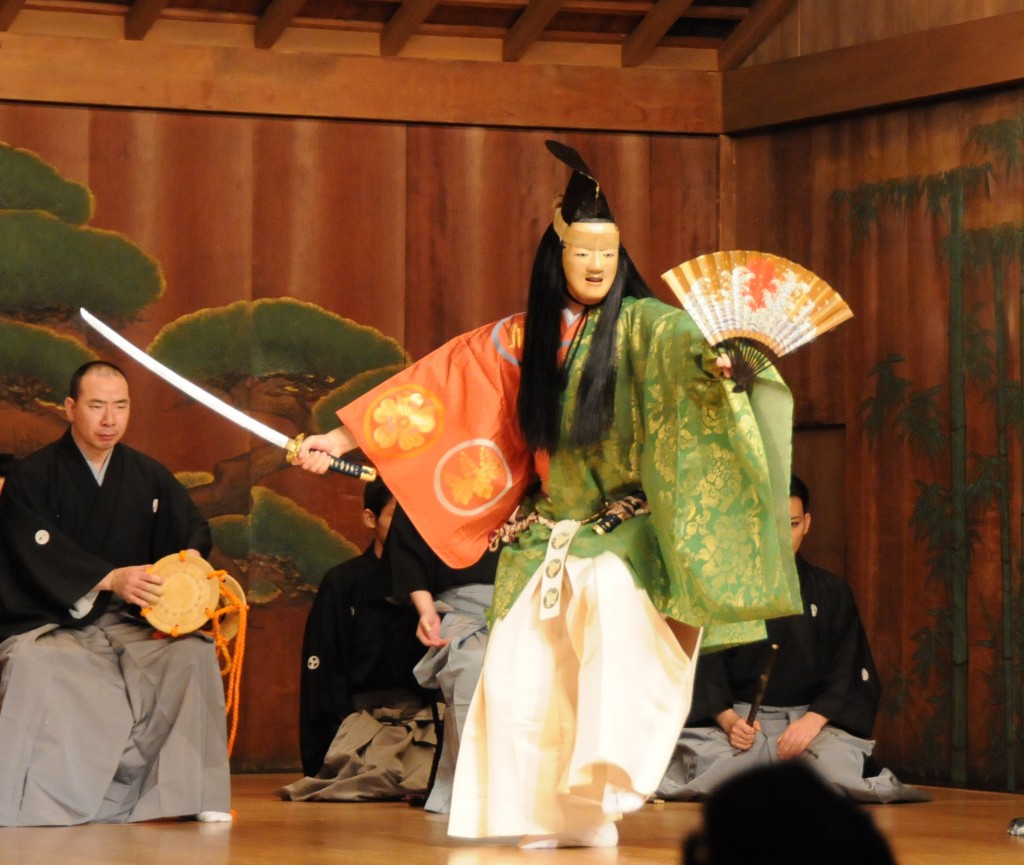As promised last Wednesday, I went to a Noh performance yesterday. It was a special performance by students of the International Noh Institute in Kyoto, and there were many international performers (including women) which makes this a special event indeed, as most Noh actors you see here are Japanese. This has to do with the fact that Noh schools (like many other traditional arts) have been run by the same family for centuries and the children are groomed from a very young age to take over the school.
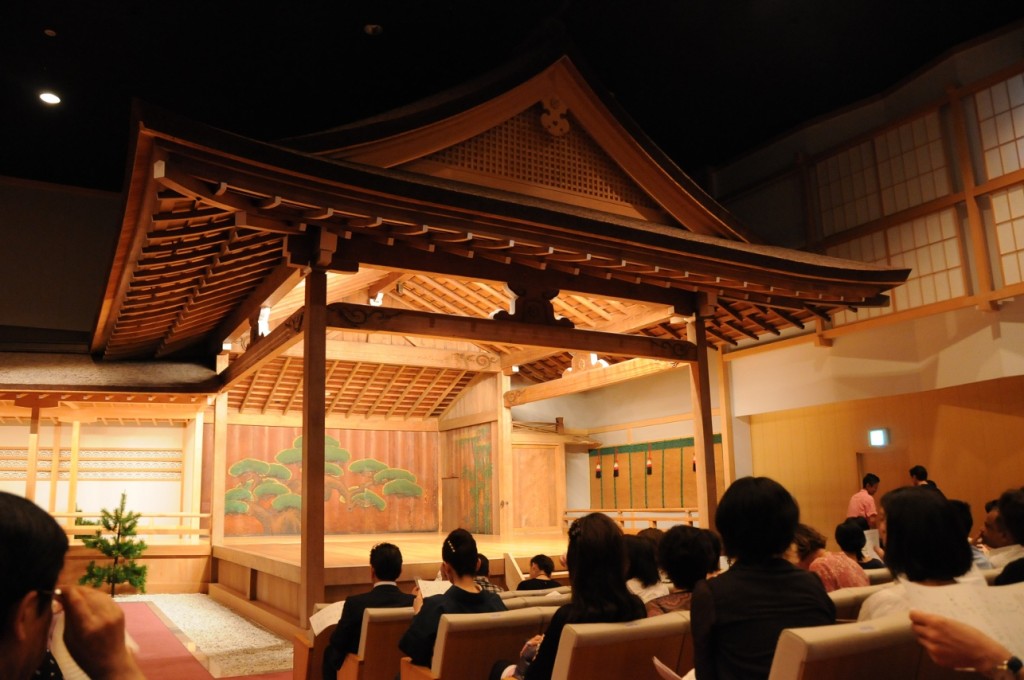
Anyway, there were a large number of different plays, three full Noh plays, and several smaller excerpts, scheduled from 11 – 17 o’clock. I already knew there was no way I could stay even remotely focused for all of six hours, so I decided beforehand to only go to the first two, the first one with a variety of dances and songs from different plays, the second one the full play Kiyotsune.
Of course, before going I did some research and read about Noh. I know now that the art originated in the 14th century, and that it remains essentially unchanged until today. I found out that any professional actor starts training as a child and must know all the parts – from chorus to lead actor – and must be able to sing them. And that the ensemble for a particular play will only rehearse together a single time before the performance. So, I went there with certain expectations. Not that I could tell you exactly what they were of course, but I certainly did not expect what I got to see. Okay, where do I start?
There were several groups of people on stage: the musicians (up to three different drums and a flute), the singers of the chorus and the actors. The musicians play the music, but not all the time, and sometimes during playing they shout as well, which I found distracting, because the were even louder than the actors at times. The chorus more or less explains the background and tells the story itself, and its members probably have the largest part to memorize. Both groups are dressed in standard, dark Japanese attire.
The actors themselves – most elaborately dressed with bright costumes and, in case of the main actors, wearing masks and wigs – engage in dialogue with each other and dance as required. They may also act out certain parts of the story, fighting for example. And this acting struck me as most peculiar. I expected it to be very formalised and stylised to begin with, but in fact, over long stretches of the play there was hardly any movement. Restrained would be a good word here, even sparse. For example, the wife of the dead warrior was supposed to cry over the death message; this was only indicated by her raising her hand towards her masked face.
It was interesting that actors who did not appear in a certain scene did not leave the stage. Instead, they took a sitting position somewhere (doubtlessly precisely indicated by tradition) and faded into the background, motionless. Otherwise, props that were not needed anymore were immediately removed by a stagehand and put outside. This means that in the end, when everybody has left, the stage is completely clear again. Also, the musicians and the chorus barely moved, except for the taking up and putting down of their instruments and fans, respectively. And all through the performance, the chorus had to kneel on the hard wooden floor – quite a feat in itself, I know how much that can hurt!
Altogether I found it a very interesting experience. I was glad for the summary of scenes and explanations I picked up before the play, as there is no way of understanding it – old Japanese, remember – and the tiny clues indicating feelings or movements otherwise. For the next time I’ll have to do even more research. I don’t think this is an experience I need to repeat anytime soon, but the next time somebody suggests going, I’ll surely say yes!
Finally, to give you an idea of what I’ve been talking about, here is a very brief summary of the play Kiyotsune together with some pictures:
Taira no Kiyotsune is dead. He drowned himself at the imminent destruction of his clan. His retainer, Awazu no Saburo, travels to the capital to inform Kiyotsune’s wife of his death
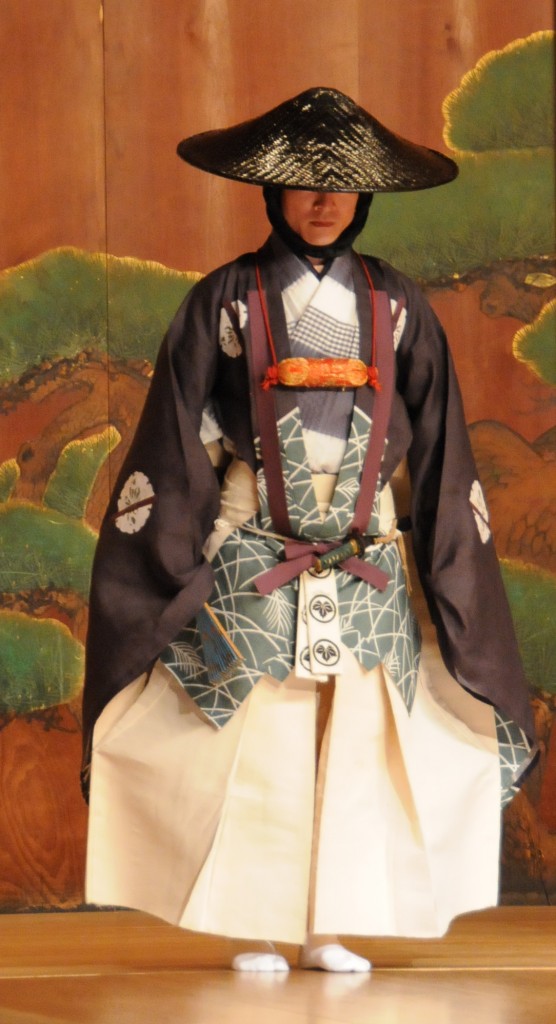 He hands her a keepsake of her late husband, a lock of his hair.
He hands her a keepsake of her late husband, a lock of his hair.
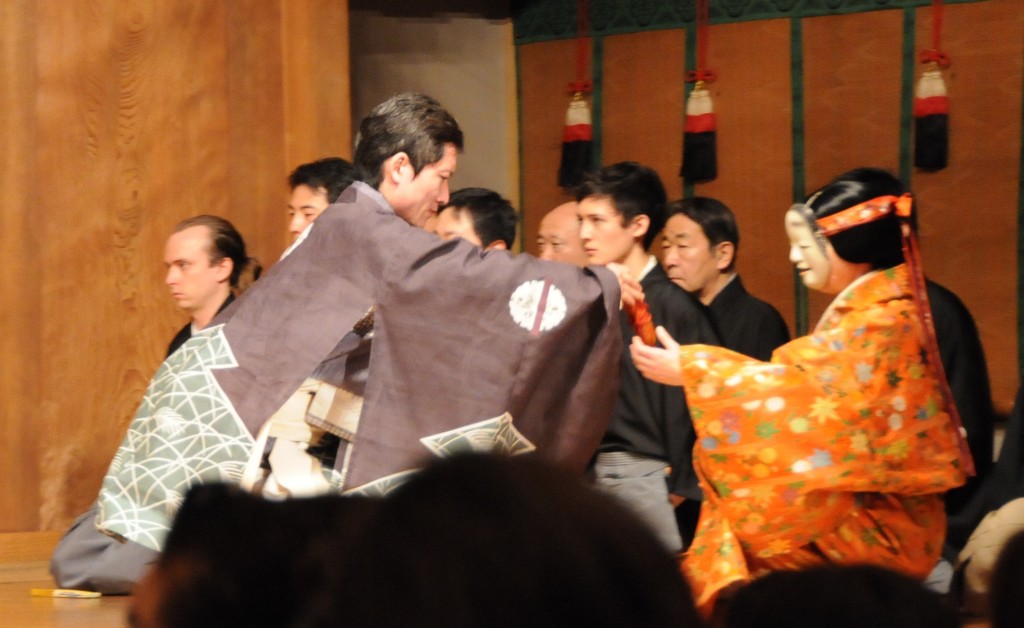 After he has done so, Kiyotsune’s ghost appears.
After he has done so, Kiyotsune’s ghost appears.
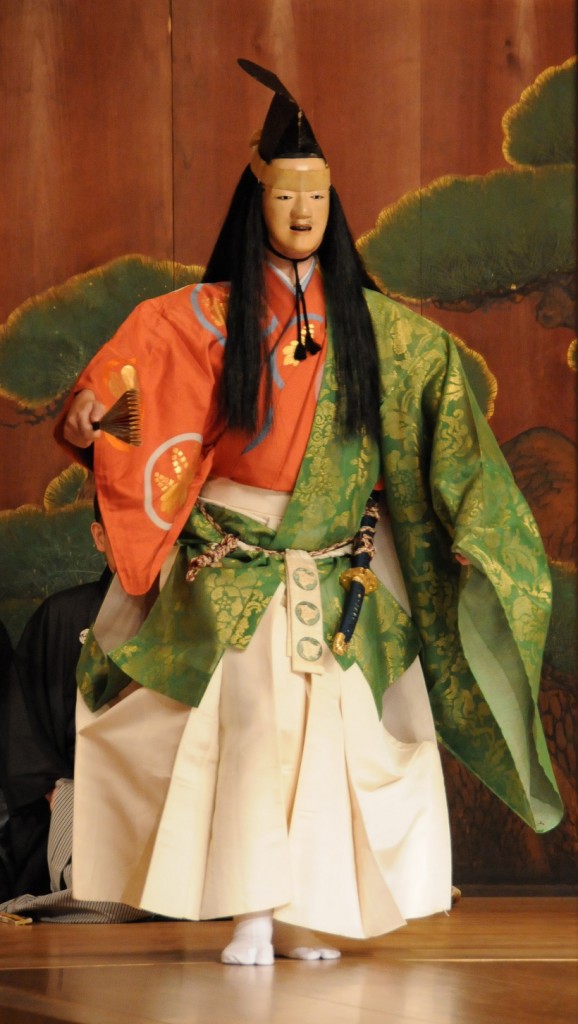 His wife is happy to see him, but soon laments his death, and the fact that she is now left alone. They begin to argue.
His wife is happy to see him, but soon laments his death, and the fact that she is now left alone. They begin to argue.
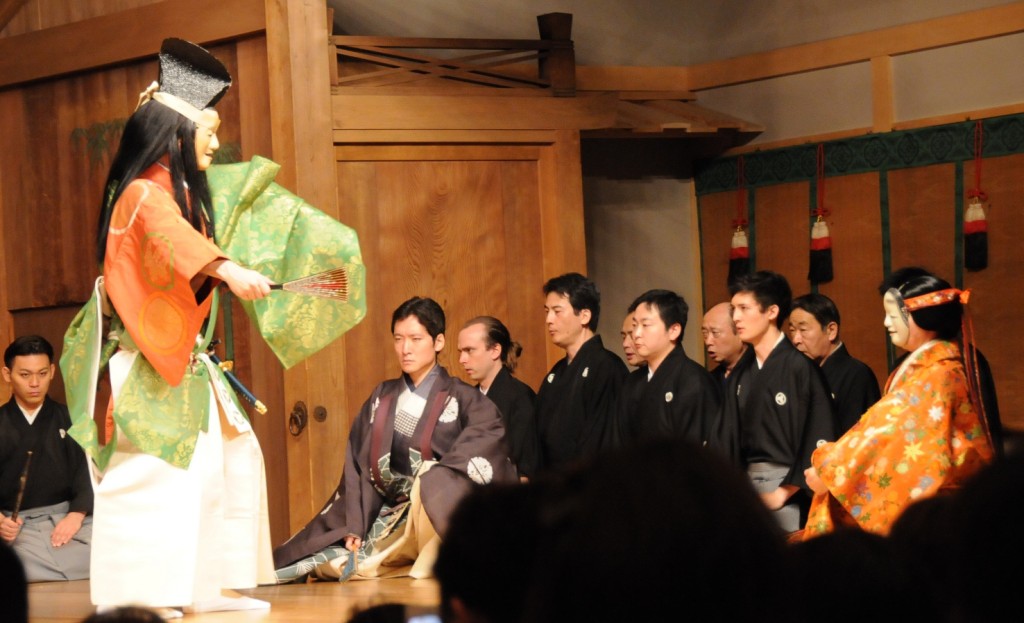 Kiyotsune recalls the last days of his life and explains why he had to kill himself. Kiyotsune battles again in the afterlife before he can finally enter paradise.
Kiyotsune recalls the last days of his life and explains why he had to kill himself. Kiyotsune battles again in the afterlife before he can finally enter paradise.

